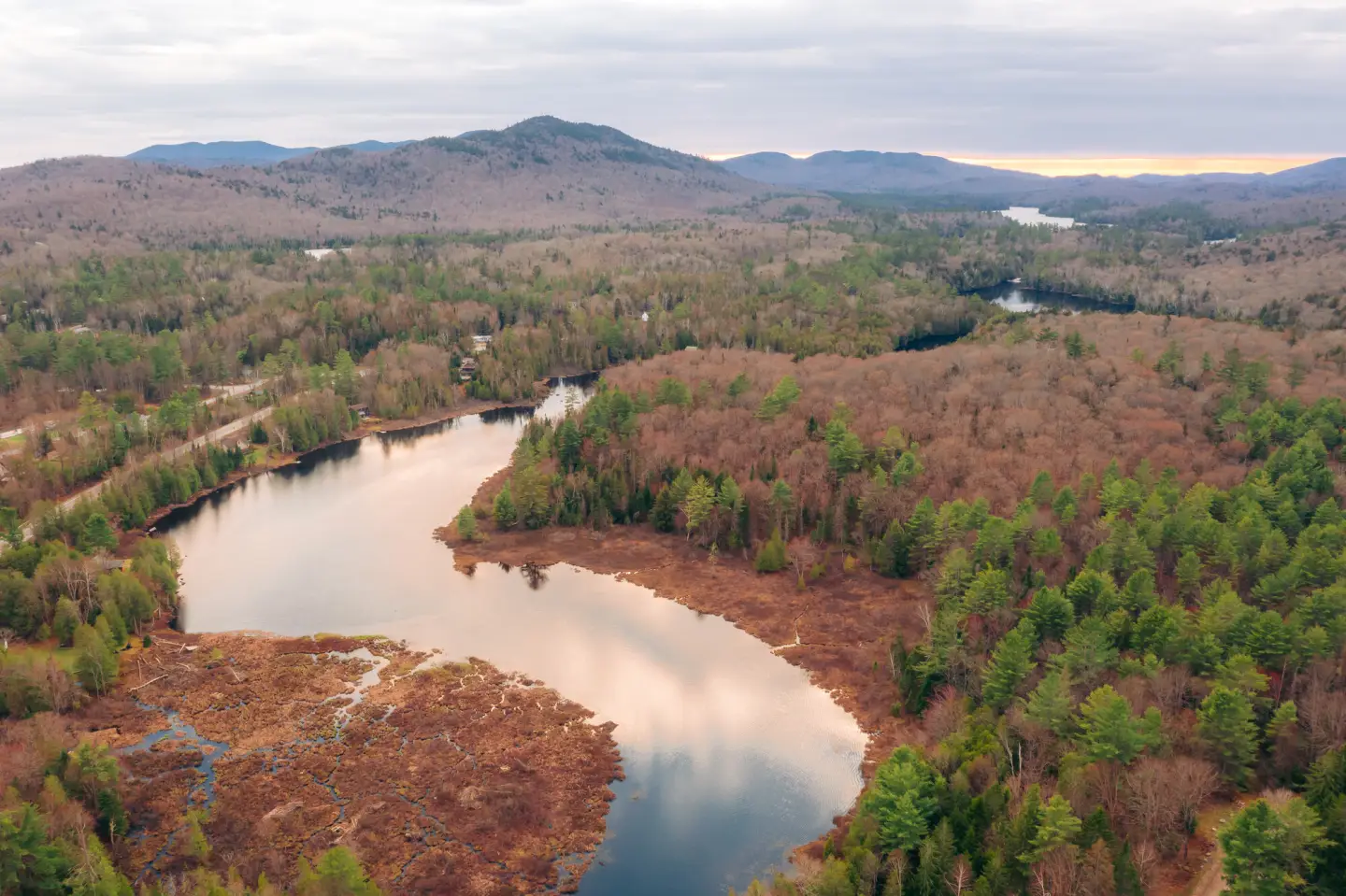Written for AdirondackHub.com by guest blogger and boat builder Nathaniel Atkinson.
A pack canoe trip in the Adirondack Hub, and the history behind the craft
When you think of going for a paddle, it’s easy to picture a solo adventurer making their way through a winding stream by kayak, or maybe even a pair of canoeists setting out for a weekend camping trip on the lake. Here in the Adirondacks, there is an equally picturesque method of travel, one that is spreading in popularity across the country, but can trace its roots back home to Northern New York. For a growing number of paddlers, the pack canoe is the perfect companion for their floating adventures, and it is easy to see why. Come along for some history of the Adirondack pack canoe, and a beginner-friendly trip in one!
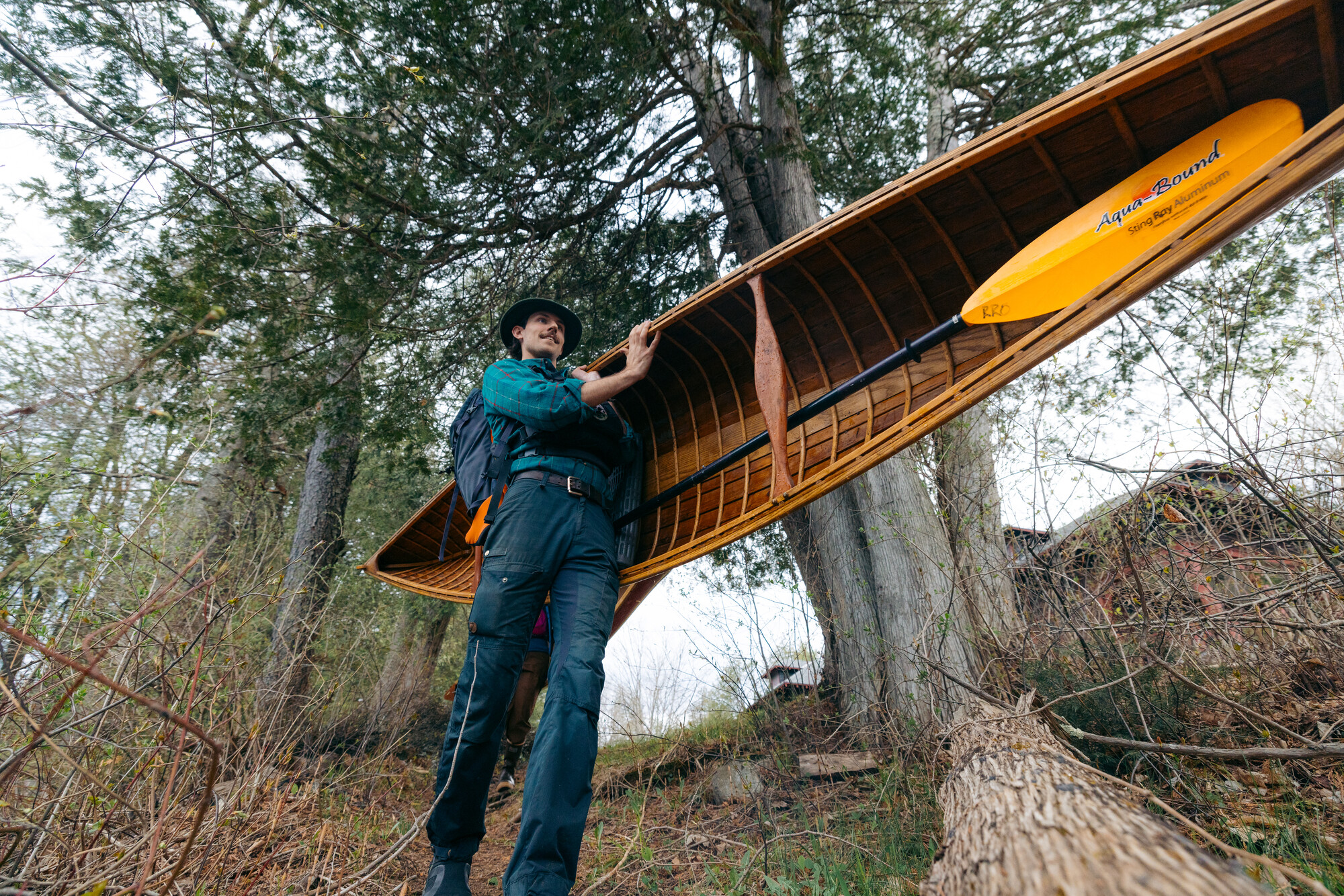
History of the pack canoe
The pack canoe combines the straightforward ease of kayaking and the lightweight versatility of canoeing into one easy-to-carry, cartop, maneuverable package thanks to its deckless design. It provides stability and comfort even in choppy waters and windswept lakes thanks to the sit-on-bottom seating style. Pack canoes are also sleeker than the average solo canoe or kayak, making for efficient paddling and more time for exploration. With a variety of options available today from local manufacturers like Hornbeck Boats, Placid Boat Works, Slipstream Watercraft, and the Adirondack Canoe Company, paddlers have their choice, whether it’s for long-distance tripping or remote pond fishing.
While the pack canoe may seem like a simple idea, it took just the right place, time, and people to come up with this style of watercraft. It was crafted out of the minds of John H. Rushton and George W. Sears, better known by his pen name Nessmuk. Nessmuk was a small individual and was ailing from Tuberculosis when he requested that the master boat-builder of Canton New York craft him the lightest boat he could manage. In 1880 Rushton produced the Wood Drake, coming in at only 18 pounds over its ten-foot length. This boat was a stark departure from any other light canoe of the time. In 1879 the lightest canoe offered was a thirteen-footer coming in at 35 pounds. Nessmuk canoes quickly became a top seller at Rushton’s shop, and a friendly alternative to the most common boat of the day, the Adirondack Guideboat. Guideboats were rowing craft and required higher skill to manage as well as requiring the operator to sit backwards.
When wood canvas canoes became popular in the early 1900s, the pack canoe saw a lull in popularity. Wood canvas canoes required less skill to make and could be mass-produced for a cheaper price. The real cost was the weight, small solo canoes of this style came in at 50 pounds. Paddlers had sacrificed portability in favor of the economy. It was the composite canoe movement that saved the pack canoe and brought it back to the public eye. Fiberglass and Kevlar canoes laid up in molds could reach weights akin to their old cedar lapstrake cousins but at the speed and price of canvas canoes. A revival in the Nessmuk style canoes was led by individuals who carefully measured the old wooden boats held in the collections of museums and private boathouses.
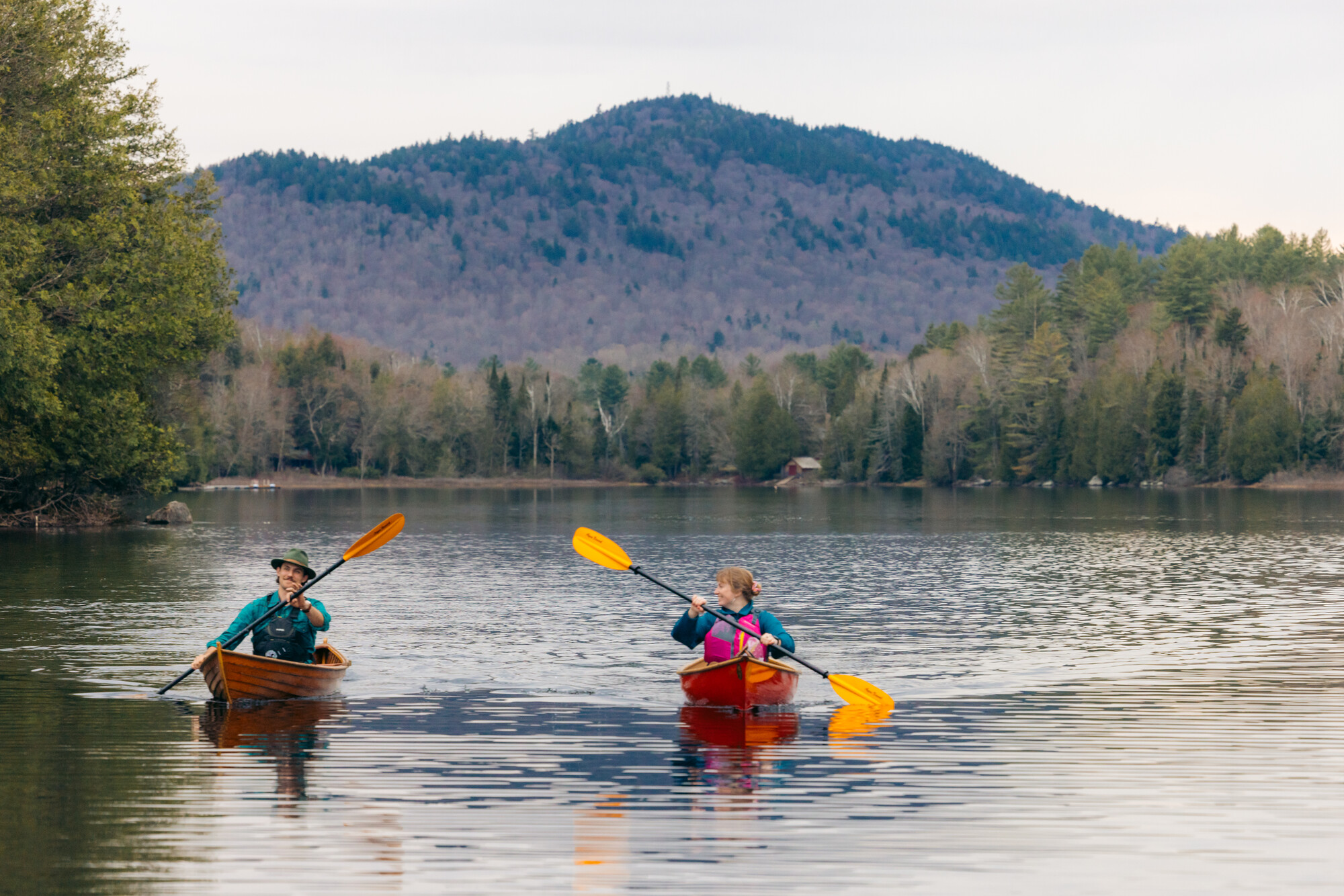
Rich and Harris Lake in Newcomb
With my paddling partner in a Vermont Canoe Co. “Tupper”, designed by local builder Rob Frenette of Raquette River Outfitters, and myself in a cedar lapstrake version of the same boat, our paddling trip was a clear comparison of modern pack canoes and their wooden predecessors. The most remarkable observation was just how similar the experience was for both of us. As we put in at Rich Lake and made our way east to the Newcomb, our canoes tracked along nicely and made quick work of the short rocky carries that lay along Rich Lake outlet on the way to Belden Lake. Obstacles that would stop a tandem canoe in its tracks required only a simple shoulder carry to traverse and we were back on our way. We were only day-tripping this time but could have easily stayed overnight at the Lake Harris State Campground, which I highly recommend! Our pack canoes don’t interfere with bigger camping packs, one of the perks of these agile crafts.
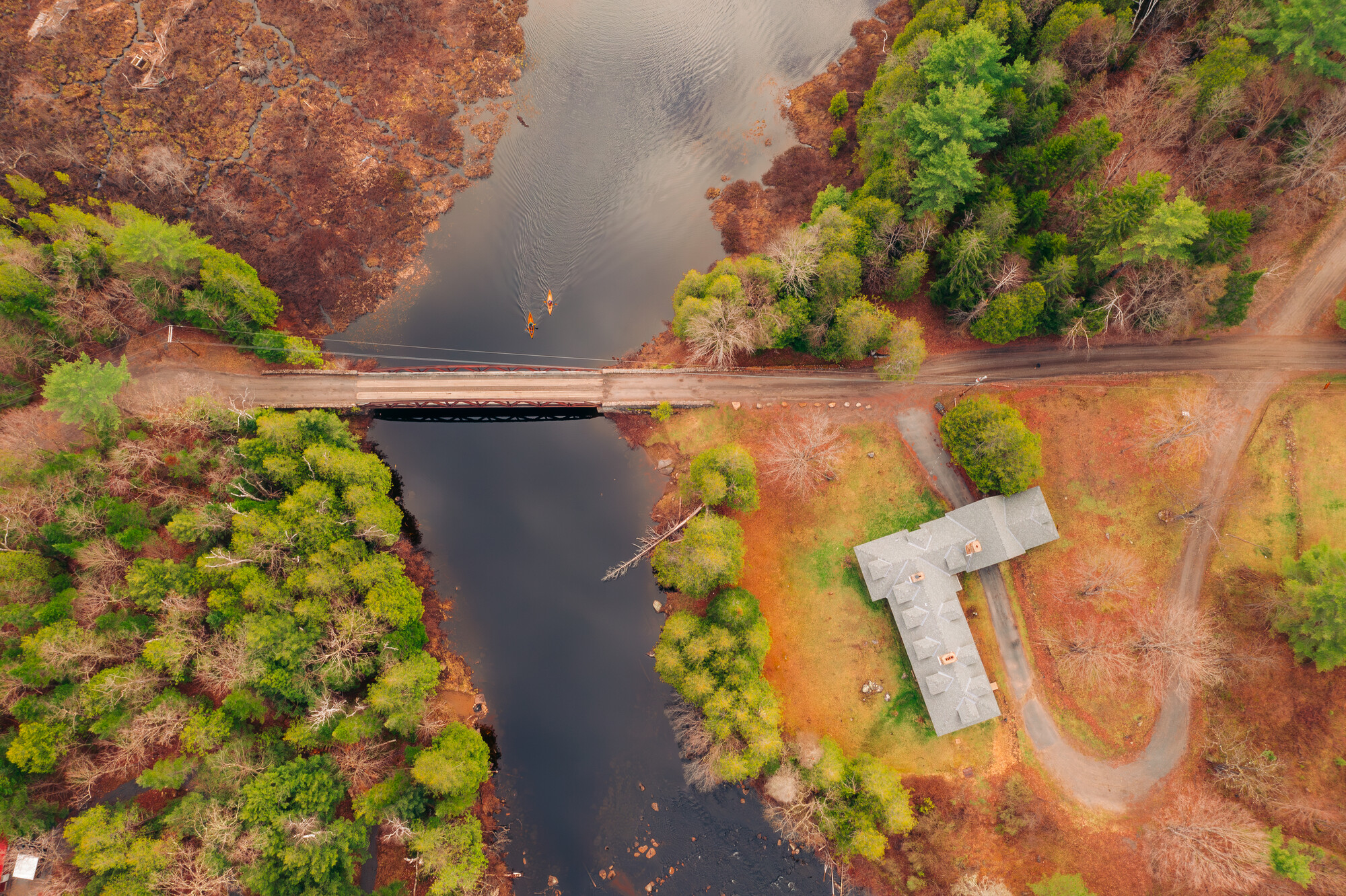
As we passed the Great Camp Santanoni gatehouse I was reminded of the times when these boats first began gracing our Adirondack waterways and great camps like these were thriving across the region. What was once a summer retreat for wealthy adventurers is now a haven of public lands and waters for all to enjoy. Boats like ours help to make these beautiful places accessible for all. Pack canoes can easily be cartopped by one person and carried into the most far-flung reaches of the Adirondack Park. This allowed us to complete our trip in one short evening after a full day of work. By the time we reached our rendezvous at the Newcomb Town beach, on Lake Harris, the sun was just getting low in the sky, canoes were lashed to our roof racks, and we were treated to a beautiful sunset as we drove along Route 28 on our way home.
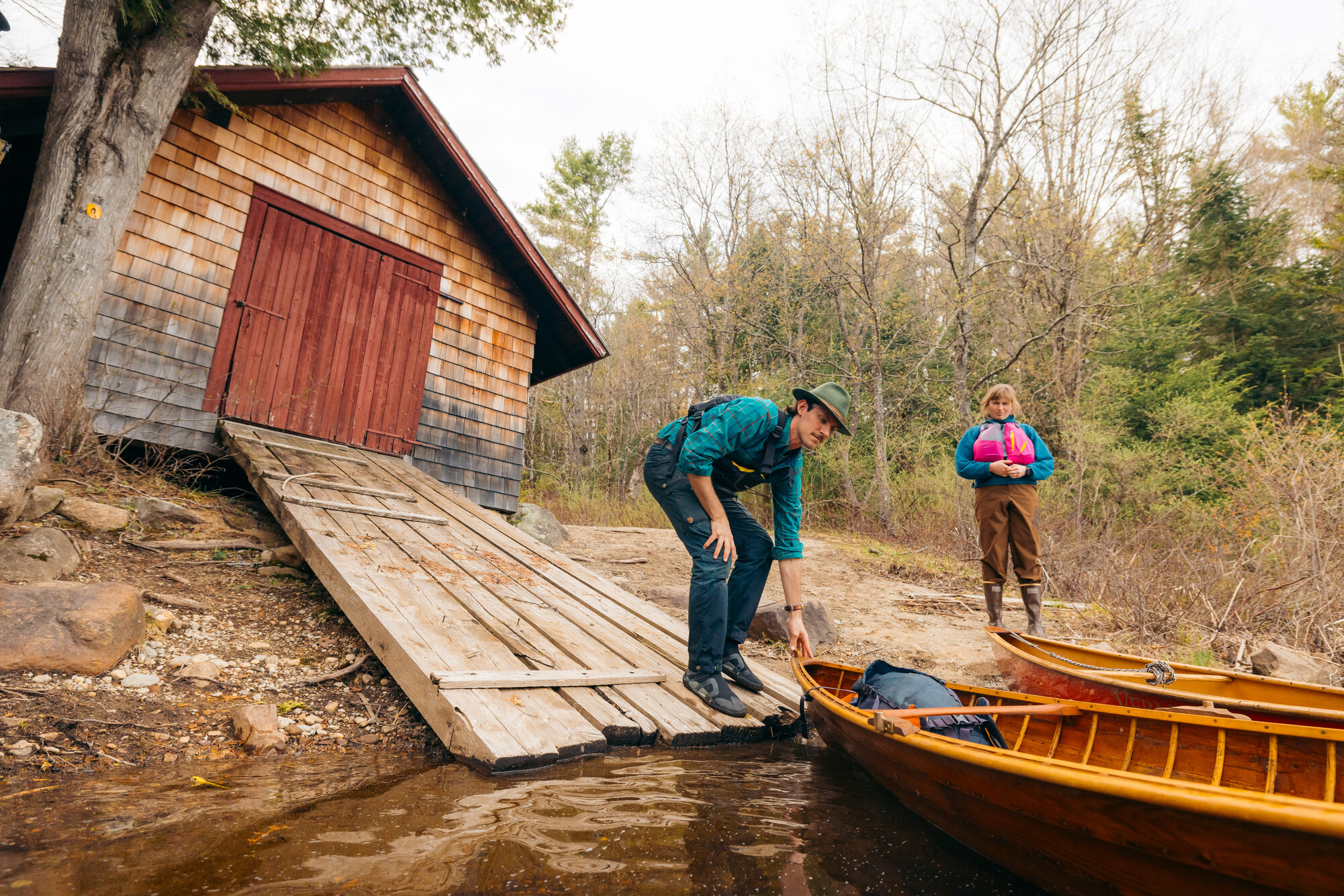
This straightforward one-way pack canoe trip from Rich to Harris Lake is beginner-friendly, and should be tried by any water recreation enthusiast! While you’re in Newcomb, be sure to stop at the Adirondack Interpretive Center trails or the fire tower on Goodnow Mountain (which you’ll spot on this pack-canoeing trip!).
This story was written by Adirondack guide boat builder Nathaniel Atkinson.
